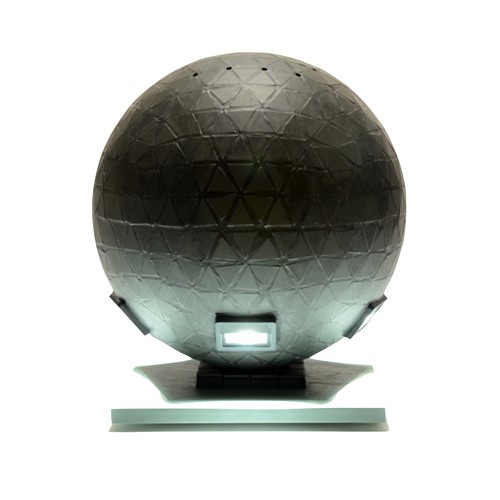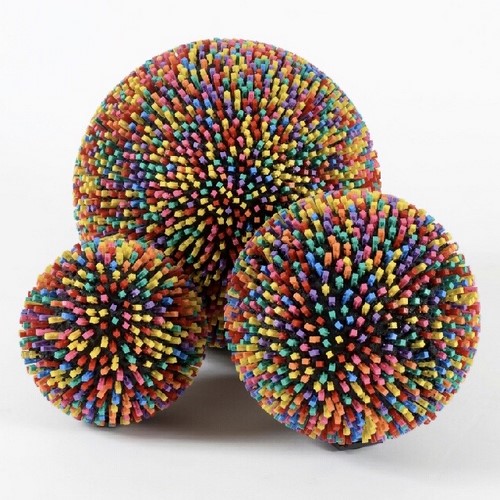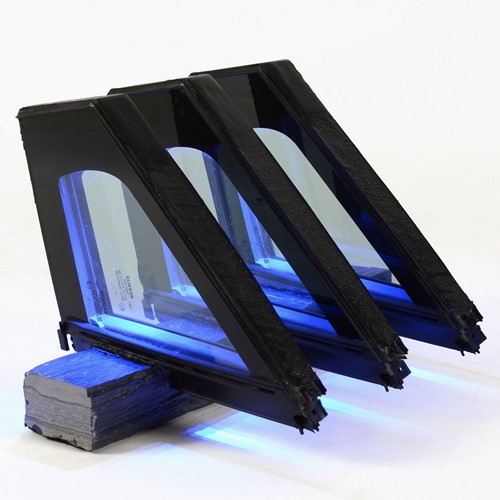An artistic creation intrinsically
linked to Mathematics
Discover and buy the work of Philippe Fares
Amateurs, collectors, professionals, invest in sculptures with a unique style
View galleryA contemporary sculptor whose roots are the primary arts

Philippe Fares defines himself as an Artist Engineer Sculptor. He was born on December 8, 1958 in Paris. He is the father of two children.
The artist grew up in sub-Saharan Africa where he was initiated to the plastic arts and more precisely to the primitive arts.
His mother, who was a French teacher, taught him the nuances and differences between the traditional Bantu, Fulani and Bamileke civilisations. Returning to France at the age of 16, he perfected his culture of Western Arts and followed scientific studies which he completed with an engineering degree (ESTP Paris).
Throughout his professional career, he was in charge of major construction sites and mastered, among other things, the installation of reinforced concrete. He frequently knows how to give it complex shapes by working closely with architects. Philippe Fares compares the construction of a large building to the realization of a gigantic sculpture.
An artistic approach at the crossroads
of mathematics and the modern world's transience
An artist focusing on descriptive geometry

Structural calculations, material resistance, descriptive geometry: these are all techniques that he uses today in the elaboration of his pieces and paintings (optimization of shapes, choice of materials, etc.).
Artificial light bathes some of his creations in a specific chromatic field and amplifies the contrast of the guidelines.
The work dimension is essentially determined by the architecture that frames it or the surrounding orthonormal space, itself redefined by light projections. On the subject of light in art, Dan Flavin said in 1987: One may not consider light as an objective phenomenon, but this is how I see it. And as I said before, art has never been so simple, open and direct.
For Philippe Fares, the relationship between colors, dimensions, and positions is essential. The proportion between the horizontal, the vertical, and the depth is in the image of the three dimensions that surround us. It is combined with the oppositions that generally govern life and space – the more and the less, what exists and what does not exist.
An artist who loves beautiful mathematics

The visual artist designs and realizes his creations himself without any external subcontracting. The elaboration of a work is done in four stages.
In the first stage, he makes a real preliminary project with sketches made on paper. Then comes the project itself with a phase of drawings, mathematical calculations, descriptive geometry and studies on the resistance of materials. The manufacturing methods and the way in which the part will be made are the next step.
The artist then assembles all the materials that will make up the work.
The final stage of manufacturing is often achieved by permanent assembly, with structural bonding of 3D shapes and surfaces that may or may not be adjusted in space. The artist mainly uses materials of equivalent hardness and density, related to the recommended glues (metal, glass, granite, ceramic, solid slate, etc. / epoxy or polyurethane glues and polymers). The objective is to avoid excessive anisotropy in his creations.
You want to talk with the artist
Contact Philippe FaresLight: an essential vector for the creation of Philippe Fares

It is an artistic design based on shapes obtained by geometrisation in three dimensions. Some of Philippe Fares’ sculptures can be considered as prototypes for possible mass production.
Each sculpture is unique and if some pieces of a series present similarities, they are not identical. For example, in the 4 Rings series, the type of lighting can vary (halogen / LED). The same is true for the base, whose design is changing, and the structural mesh, which is never elaborated in a similar way.
The artist uses precision measuring instruments to take his bearings: the laser to trace horizontals and verticals, the calliper, and of course all the more classic tracing tools such as the square, compass, ruler, flexible ruler, etc.
Philippe Fares is a visual artist who considers light (natural or artificial) as a key element in most of his creations of complex geometric character.



